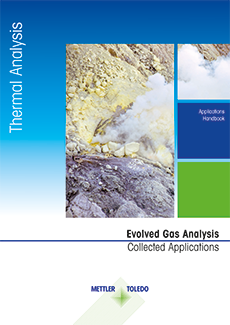Thermogravimetry and Gas Analysis, Part 3: TGA/DSC-FTIR
TGA experiments combined with evolved gas analysis (EGA) not only provide quantitative information about the change in mass of a sample but also supply qualitative information about the gaseous reaction or decomposition products that are evolved. In this third article of the “Thermogravimetry and Gas Analysis" series, we will show how TGA-FTIR experiments are performed and evaluated.
Introduction
The first part of this series presentdifferentent techniques for the analysis of gaseous decomposition or reaction products evolved in a TGA experiment.
In this article, we describe the use of a TGA coupled to a Fourier transform infrared spectrometer (FTIR). What parameters are vital for the successful operation of the TGA and the FTIR, what is important regarding the sample, and how do we evaluate the vast amount of data that is collected? These and other topics are discussed in the following sections.
TGA-FTIR Setup
TGA-FTIR measurements are performed using a normal TGA/DSC or TGA instrument. METTLER TOLEDO offers an optimized TGA furnace interface for connecting the TGA to the FTIR spectrometer and recommends the Thermo Scientific™ TM iS™50 or iS™10 FTIR spectro-meter equipped with a gas cell as spectro-meter. In principle, any FTIR spectro-meter equipped with a suitable gas cell can be used.1
Conclusions
TGA-FTIR is a powerful technique that can be used to quantify the mass losses of a sample and at the same time identify the gaseous substances evolved.
When several complex substances are simultaneously released, interpretation and identification of the measured spectra requires experience or the use of a suitable database. Chemigrams can be used to follow the release of particular substances such as carbon dioxide or water as a function of temperature.
This article gives a step-by-step overview of the procedure for data analysis and shows that a few simple measurements can provide a lot of relevant information.
Thermogravimetry and Gas Analysis, Part 3: TGA/DSC-FTIR | Thermal Analysis Application No. UC 471 | Application published in METTLER TOLEDO Thermal Analysis UserCom 47








